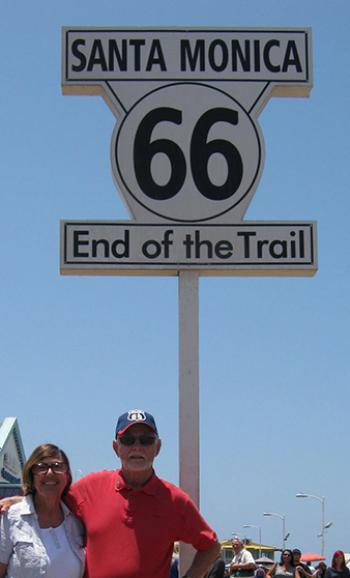Planning a US driving trip
This item appears on page 25 of the September 2021 issue.
My wife, Bonnie, and I have taken unusual road trips in the USA. We’ve driven Route 66, the Mother Road, from Chicago to the Santa Monica Pier in California. We’ve done Route 6, also referred to as the Grand Army of the Republic Highway, from Provincetown, at the tip of Cape Cod, Massachusetts, to the original terminus in Long Beach, California. In 2019, we drove part of the Lincoln Highway, the first coast-to-coast paved road in the US, linking New York City with San Francisco. It first opened in 1915.
Each of these road trips offers opportunities to see the US from a different perspective. You’re not on the interstate but on the back roads of America, the real America, the historic America.
And each trip has to be researched and laid out, with turn-by-turn directions, which I insert into a form I created.
As an example, the trip-directions sheet here [at right — Ed.] shows our plans for the first part of a trip Bonnie and I made in June 2010 on Route 66, heading from Chicago toward St. Louis. Actually, there have been a number of realignments and overlays to Route 66 since its designation in 1926. We followed as closely as possible to the original road, some of it being interstate overlay and some with signs identifying “Historic Route 66.”
We made it a leisurely drive, stopping anytime or at any place of interest.
I found our old 2010 trip log, and here are my notes for the first day:
Left Palmer House Hotel, Chicago, at 7:40 a.m.
Had breakfast ($32.71) at Lou Mitchell’s Restaurant, 565 W. Jackson Blvd. (parking $6). Mileage at 2,119.
Drove about 1½ hours to Joliet; visited Historical Museum, 204 N. Ottawa St.
Drove to Dwight, IL; had lunch ($11) at Old Route 66 Family Restaurant. Mileage: 2,210.
At Lexington, IL, old Route 66 tunnel turned into a bike path.
Visited Funks Grove.
Arrived Crown Plaza Hotel, Springfield, IL, about 6:40 p.m. (very tired). Mileage: 2,351 (drove 232 miles today).
With few exceptions, we didn’t make hotel reservations. Our modus operandi was to sleep in, be on the road by 9 a.m., make a pit stop, have something light to eat around noon, drive for another three or four hours and then start looking for a place to spend the night and to have dinner.
Our clothes could all be washed in a motel washing machine.
Places we wanted to visit were indicated on our trip direction sheet, and while we kept daily records of itemized costs, i.e., gas, food and lodging, we didn’t really keep records of all the places we stayed or ate or anything like that.
SKIP CARPENTER
Coronado, CA

